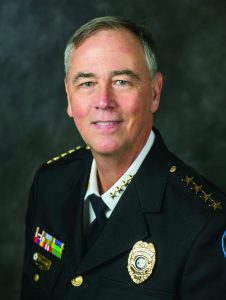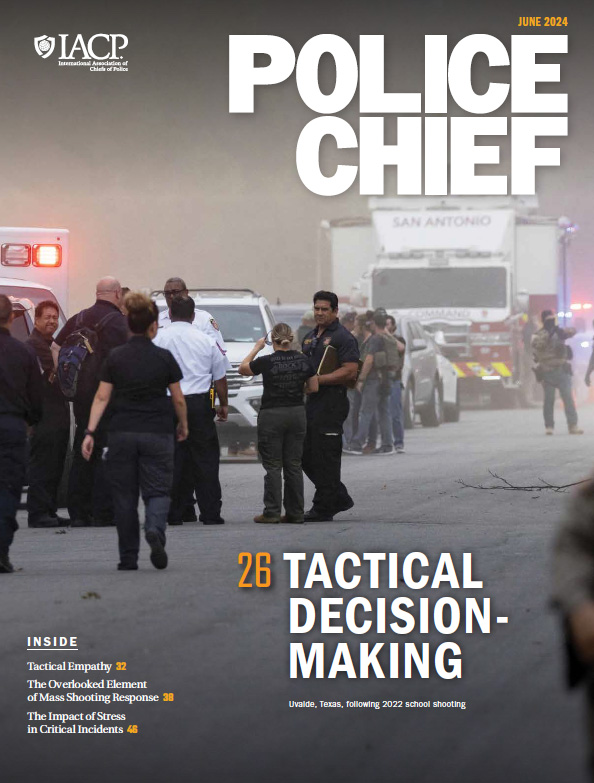
It seems like every day the news is covering another story about gun violence in our communities.
According to a report issued by the Centers for Disease Control, “an estimated 20,966 firearm homicides and 26,320 firearm suicides occurred in the United States during 2021.”1 From 2020 to 2021, the percentage of homicides and suicides attributed to firearm injuries increased from 79 percent to 81 percent and from 53 percent to 55 percent, respectively, resulting in the highest percentage for homicide in more than 50 years and the highest percentage for suicide since 2001.2 According to the Gun Violence Archive, there were 648 mass shootings—events in which four or more people were shot—in the United States in 2022, along with numerous violent gun incidents throughout the world.3
Firearms play a role in many preventable deaths, which is another reason why appropriate management of these weapons is a crucial piece of gun safety. Law abiding gun owners have a responsibility to keep their firearms secure and out of the hands of those who should not have access, including children, untrained individuals, and potential thieves. Beyond accidental firearm deaths, guns pose a significant risk for suicidal individuals. Someone experiencing a mental health crisis or suicidal thoughts may take advantage of a gun, if available, as a means for attempting or completing suicide. We must do everything we can to prevent these outcomes for all individuals, including law enforcement personnel, through intervention efforts such as those outlined in the Toolkit on Preventing Law Enforcement Suicide, produced by the IACP, and by promoting safe firearm storage.4 According to the Bureau of Alcohol, Tobacco, Firearms and Explosives there were 1,074,022 firearms reported stolen between 2017 and 2021.5 All gun owners must ensure they take active steps to keep their firearms from falling into the wrong hands by locking them at home; never leaving them in a vehicle; and keeping them from being accessed by children, criminals, or anyone else not authorized to possess the firearm. Law enforcement agencies can help by educating the public, providing active messaging to their community via social media and news outlets, and holding gun owners accountable as provided for by their federal, state, and local laws. Initiatives like the Right to Carry, Duty to Secure (workshop can be found on IACPlearn) provide agencies with best practices they can share with their community on how to safely secure their firearms.6 Agencies can also take the extra step of providing gun safes to their officers, as supported by the IACP Firearms Committee, to help them carry out their duty to keep weapons safe when off duty.
As police leaders, we are constantly researching effective violence reduction strategies to keep our communities safe. One easy-to-integrate practice is to take advantage of the no-cost systems offered by the ATF to help investigate and ultimately remove dangerous weapons from our communities. Gun violence is a dynamic and far-reaching issue—our enforcement approaches must be, too.
eTrace
The ATF has the only gun tracing platform in the United States that can be used by local, state, federal, and global law enforcement agencies to investigate criminal gun activity. eTrace, the no-cost, web-based application tracks the movement of firearms from manufacture through the distribution chain. The system provides agencies with the ability to compare firearms data across multiple jurisdictions, allowing gun-related crimes to be better connected and investigated, which can expedite the identification of potential firearm traffickers.
With increased communication and information sharing, we can all work together to help keep the public safe.
With eTrace, the ATF can process trace requests faster and provide law enforcement with more comprehensive crime gun information. The ATF assisted with 548,000 requests in 2021. When law enforcement has access to timely crime gun reports, provided by the ATF on the collected data, they can develop short- and long-term strategies to reduce gun violence in their communities. Additionally, eTrace offers agencies the ability to share their crime gun information, facilitating cooperation across jurisdictional lines and allowing law enforcement globally to coordinate in an effort to stop criminal activity involving guns. With increased communication and information sharing, we can all work together to help keep the public safe.
NIBIN
When trying to combat gun crime, receiving ballistic information in a timely manner helps police better investigate crime and reduce the potential for further violence. Historically, U.S. law enforcement did not have the ability to conduct their own ballistics evaluations, and the manual process for doing so was time and labor intensive. Today, we have access to the National Integrated Ballistic Information Network (NIBIN), which provides local, state, tribal, and federal law enforcement with an automated ballistic imaging network at no cost to the agency.
This technology enables law enforcement to match ballistic evidence across incidents throughout the United States. Through this automated imaging network, law enforcement can connect crime gun activity and work across jurisdictions to develop violence reduction strategies.
Currently, there are 4.5 million pieces of ballistic evidence stored in NIBIN.7 To ensure that NIBIN continues to provide useful information, law enforcement agencies are encouraged to share information about criminal gun activity and enter ballistic details into the system. This simple step may provide crucial data to other agencies, helping them to solve crimes in their own communities. Meaningfully addressing gun violence takes a collective effort, and these systems allow law enforcement to be united in combating the threat of illegal gun activity.
Firearms and Ammunition Technology
Through the investigation and prosecution of gun crime, calling upon established professionals in the field will assist in achieving appropriate legal outcomes. The ATF Firearms and Ammunition Technology Division (FATD) is required by law to “respond to law enforcement agencies requests to test, evaluate, and provide expert testimony on firearms and ammunition; and to provide technical services to the firearms industry and other members of the public.” This group makes technical determinations “regarding the types of firearms approved to be imported into the United States and provides opinions regarding the classification of suspected illegal firearms and newly designed firearms.” FATD also provides expert firearms testimony for the U.S. Department of Justice, state prosecutors’ and district attorneys’ offices, and military courts.8
Leveraging the knowledge of specialists is yet another way collaboration can improve overall violence reduction strategies, while allowing each piece of the system to focus on what they do best. Enforcing gun laws through the entire criminal justice process will reinforce the importance of these regulations, keep violent threats off the streets, and deter future criminal activity. Prosecutors at the state and federal levels can further emphasize these goals by fully prosecuting all crimes involving firearms. With limited budgets and a staffing crisis, it is important that we access the resources available to us and help each other achieve our common goal—public safety. Implementing a multifaceted approach and taking advantage of programs like eTrace, NIBIN, and FATD, enables us to better serve our communities.
Every two years, the IACP sets its legislative agenda on issues of importance to the policing profession, and we work to address these challenges with actionable solutions. Reducing and preventing firearms violence remains an IACP policy priority, as we recognize that the tragedies resulting from gun violence can destroy lives, families, and communities. Firearm-related deaths of all kinds are a significant threat to both law enforcement officers and those they serve. To prevent further harm, we must take a comprehensive approach to confront the various factors contributing to gun violence. The steps we are taking in pursuit of this goal include legislative efforts surrounding expanding background checks, extreme risk protection orders, support for law enforcement and related agencies in violence reduction programs, and promotion of data collection initiatives such as those outlined herein. Protecting community members and law enforcement officers from gun violence can happen only through thoughtful, consistent, collective strategies at every level. Together, we can reverse the trend of increasing firearm violence and save countless lives.
Notes:
1Thomas R. Simon et al., “Increases in Firearm Homicide and Suicide Rates—United States, 2020–2021,” table All-cause and Firearm-related Homicides and Suicides—United States, 2020–2021, Notes from the Field, Morbidity and Mortality Weekly Report 71, no. 40 (October 7, 2022): 1286–1287.
2Simon et al., “Increases in Firearm Homicide and Suicide Rates—United States, 2020–2021.”
3Gun Violence Archive, “2022,” past tolls.
4National Consortium on Preventing Law Enforcement Suicide, Toolkit on Preventing Law Enforcement Suicide.
5Bureau of Alcohol, Tobacco, Firearms and Explosives (ATF), National Firearms Commerce and Trafficking Assessment (NFCTA): Crime Gun Intelligence and Analysis, Vol. 2, Part V: Firearm Thefts (2023).
6Rick Stillman, William Brooks, and Steven Pare, “Right to Carry, Duty to Secure,” IACPLearn (IACP conference workshop presentation).
7ATF, “National Integrated Ballistic Information Network,” fact sheet, September 2021.
8ATF, “Firearms and Ammunition Technology.”


